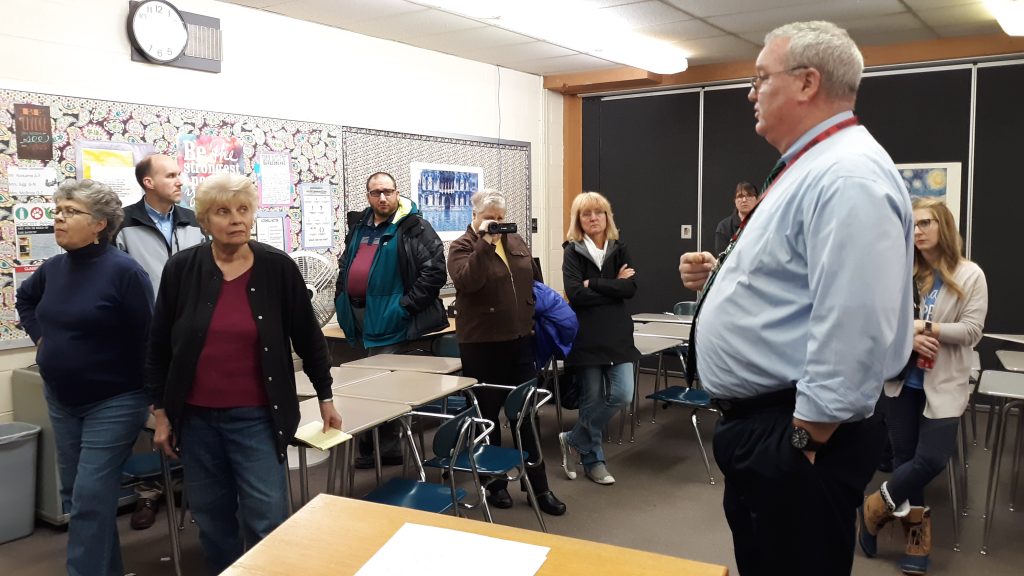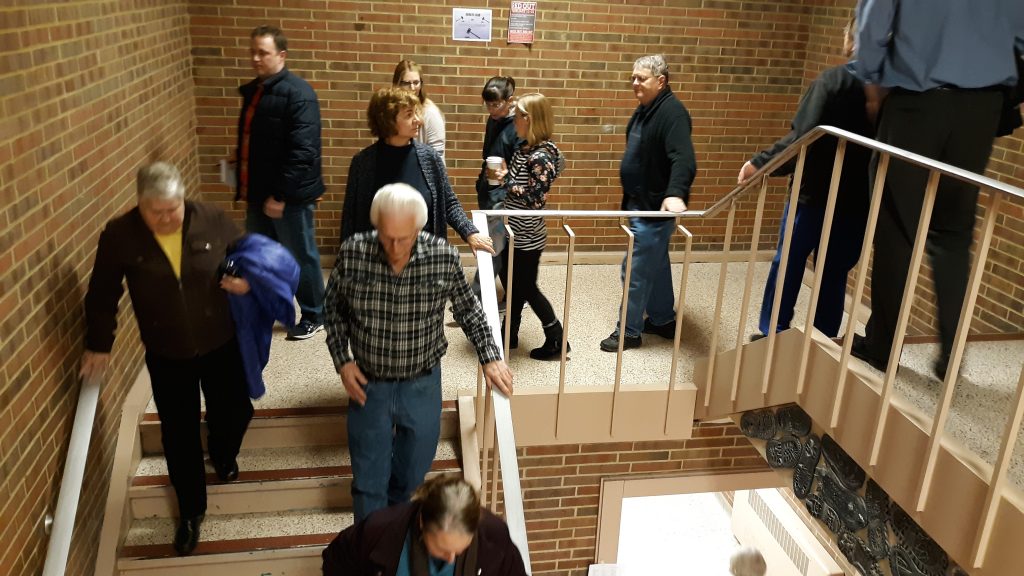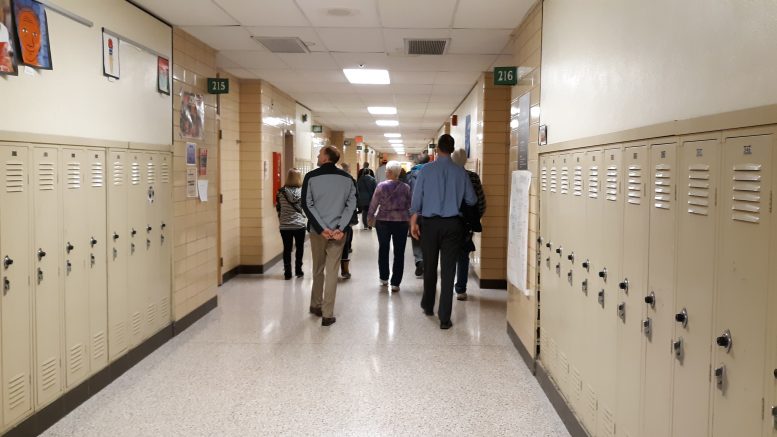By JAN LARSON McLAUGHLIN
BG Independent News
The school facilities task force came to an abrupt end Tuesday evening – with no solid solution to offer the school district.
The architects in charge of the facilities task force, with nearly 70 members, were not surprised that no unified conclusion could be reached.
“There were too many different opinions. We knew that from the beginning,” said Steve Wilczynski from Fanning Howey architectural firm. Efforts to find a middle ground instead revealed the deep divide between the factions.
The facilities task force was charged with the duty of studying the options for school buildings, then selecting the best choice for Bowling Green. That option was then to be given the school financial task force, which was charged with finding a way to pay for the renovated or new buildings.
But after seven meetings, tours of four Bowling Green schools, plus tours of new and renovated schools in Northwood and North Baltimore – the task force was disbanded with its mission unaccomplished.
Many of members, after spending so much time trying to understand the district’s needs and reach a conclusion, were frustrated and disappointed that their efforts were being ended.
In previous meetings, the task force members identified one consolidated elementary building as their top choice for the district.
But on Tuesday evening, when the task force members were asked to cast their votes according to options the community would support, there was no clear winner. So the top four options will now be passed on to the finance task force.
Last week, Superintendent Francis Scruci said during the school board meeting that the facilities task force should search for other options that the district would support – since bond issues for a consolidated elementary have failed twice.
But at Tuesday’s task force meeting, member Frances Brent made an impassioned plea for the task force to not abandon the concept of a consolidated elementary, which she said would provide the best educational setting for students.
Brent said Scruci only asked the task force to consider other options out of fear that the community would not support the one-elementary option.
“That is not off the table,” Brent said. “The administration has not given up on it.”
But when asked to vote on the different building options according to community support, the task force seemed to show those same concerns about lack of voter support for a consolidated elementary.
Tim Hamilton, from Fanning Howey, explained the reason task force members were being asked to vote according to how they envision the community feels – not according to their own preferences.
“If you’re looking to a whole community to tell a story, you’ve got to look beyond what you want,” Hamilton said.
When asked to vote according to the public’s preferences, the number one choice of the task force members at previous meetings came in dead last.
The task force voted on four different options – which had been narrowed down from all the options discussed during the last seven meetings. To give more realistic cost estimates, in addition to the construction costs, Wilczynski added in estimates for providing temporary swing space if needed during construction, the cost of demolition if necessary, the cost of asbestos abatement where necessary, and furnishings for the buildings.
The four options considered were:
- One consolidated elementary, costing $39.6 million.
- Renovations to all three elementaries, with size adjustments and reprogramming to meet the district’s educational vision, costing $32.2 million.
- Two new Pre-K through fifth grade buildings, with one at Conneaut and one at Kenwood, plus renovate and reprogram Crim Elementary, costing $37.7 million.
- Two elementaries, with a new one at the high school/middle school campus, and the other at Crim, which would be renovated and expanded, costing $34.2 million. Both Conneaut and Kenwood would be demolished.
Before wrapping up the meeting, the task force members were asked to write down suggestions for the school board as efforts go forward on facilities – such as finding different ways to communicate with the community or considering different financing options.
The task force also voted their preferences for the high school building, even though the school board has suggested that the district tackle just the elementary buildings now, and address the high school later.
Given three options for the high school, the task force members voted:
- 14 percent for a completely new building.
- 27 percent for renovations of the existing building with no addition.
- 59 percent for renovations, a partial demolition and new addition.
Prior to the meeting portion of the task force gathering, some members took a high school tour given by Principal Jeff Dever.

One of the more notable moments on the tour for some was when Dever talked about some questionable structural issues in a second floor classroom. To explain, the 285-pound principal jumped, which sent reverberations across the room.
Dever talked about space deficiencies, and the inefficient heat from the system installed in 1964. And he talked about the lack of air conditioning – which by itself is not a reason to build a new school, he said.
But he also talked about the unbearable heat some days – like the day when students were sent home early last year when the temperature in the building hit 125 degrees.
“None of you would work in an environment like that. And I don’t think we should expect our kids to either,” Dever said.
He talked about the lack of large spaces in the school, for uses such as study hall.
“I cringe everytime we put a person in fifth period study hall,” which requires students to sit on gym bleachers. “I have no other place to put them.”

Dever also demonstrated the “boot” security system installed for each classroom door in the district.
“You’re going to need about two tons of pressure to dislodge that,” he said.
Dever reassurred task force members that the district is doing the best to teach students.
“My job is to educate kids here,” Dever said. “We’re going to do the best we can.”

